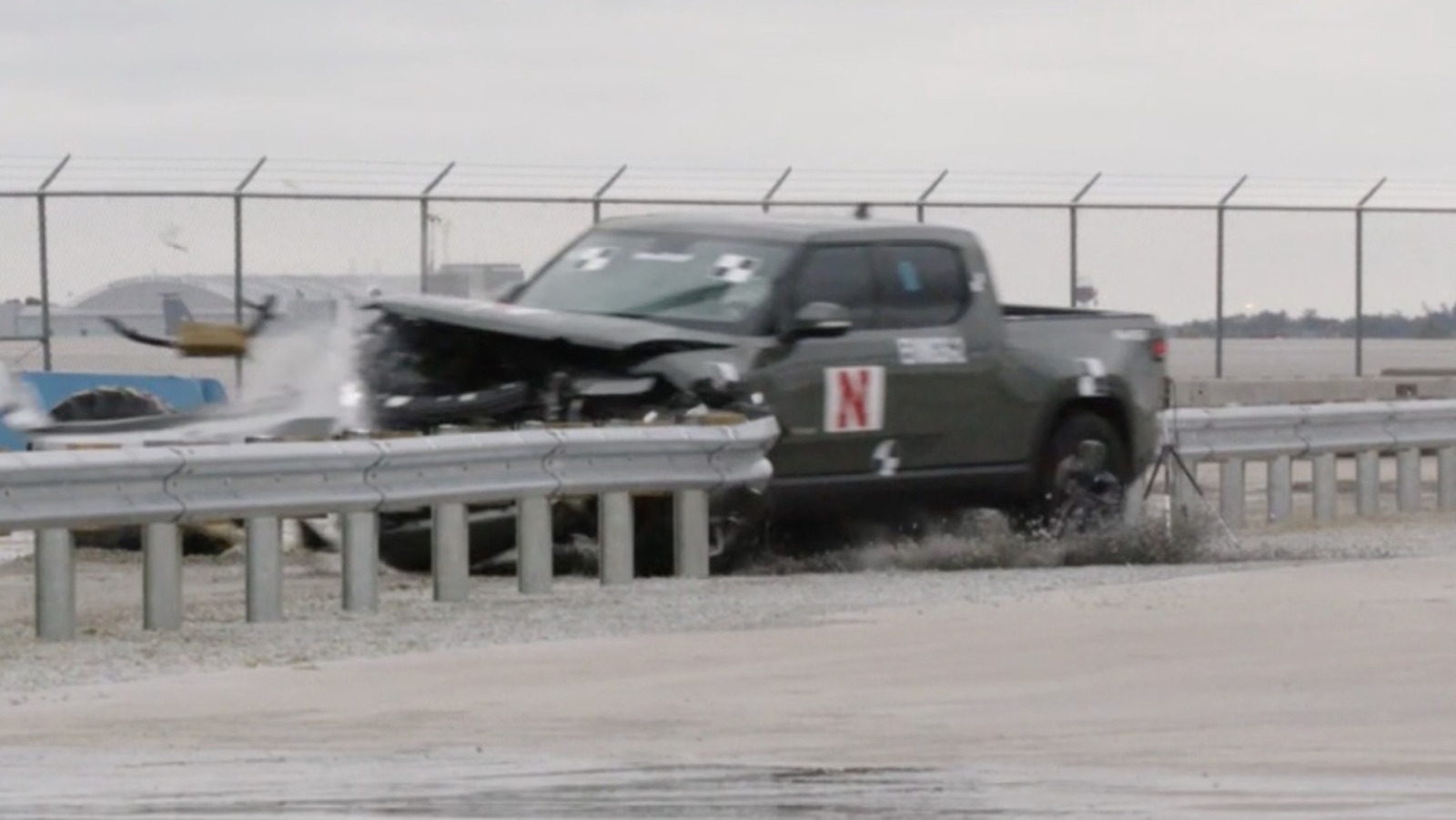
A viral video made headlines, including ours, showing a 2022 Rivian R1T smashing through a guardrail as though it were made of wet paper towels during a University of Nebraska-Lincoln test. This brought a great deal of attention to the fact that electric vehicles are heavy and going to kill us all. Certainly, the Rivian’s weight of 7,173 pounds was a factor in the guardrail’s ineffectiveness at stopping such a brute. However, an investigation by The Drive shows that the lower center of gravity that most EVs have plays a significant role as well.
According to Cody Stolle, the assistant director of the Midwest Roadside Safety Facility, where the test took place, such tests typically use a 2,400-pound subcompact sedan, representing the low end of vehicle weight, and a 5,000-lb pickup truck, typically a Ram 1500, on the high end. The Rivian weighs almost as much as these two vehicles combined. While certainly an outlier for how these tests have been conducted up until now, the proliferation of EVs on the road means more and more heavy vehicles, thanks to their massive battery packs.
However, many configurations of the Ford Super Duty and other heavy-duty versions of traditional pickups are even heavier than the Rivian R1T. Why aren’t stories about them slicing through guardrails and running over puppies all over the daily news?
Low riders
Weight is one thing, but where that weight is located on the car plays a significant role as well. The University of Nebraska-Lincoln ran the same guardrail crash test on a Tesla Model 3. It weighs 3,838 lbs, almost the same as the low-slung Ford Mustang GT Fastback with a manual transmission. While Mustangs have a reputation for plowing into crowds, it’s been proven that guardrails will stop them. The Tesla, however, went right through the guardrail just like the Rivian, despite being almost half the weight.
EVs typically place their large, heavy battery packs at the bottom of the car. This improves handling and performance, and moves the overall center of gravity five to eight inches lower than traditional fossil fuel-powered vehicles. The heavy engines and transmissions of gas guzzlers sit higher in the car than an EV’s battery pack. Effectively, an EV’s lower center of gravity transfers most of its impact force into the guardrail’s lower supports, not the structure that is designed to absorb impacts. That’s why the Tesla went under the guardrail rather than straight into it.
The problem is now twofold. Larger EVs weigh more than guardrails can handle, but all EVs have a lower center of gravity that transfers most of the impact force to guardrails in a different place than they are designed to be hit. The cost of upgrading our infrastructure to handle both EVs and traditional vehicles will be immense.

